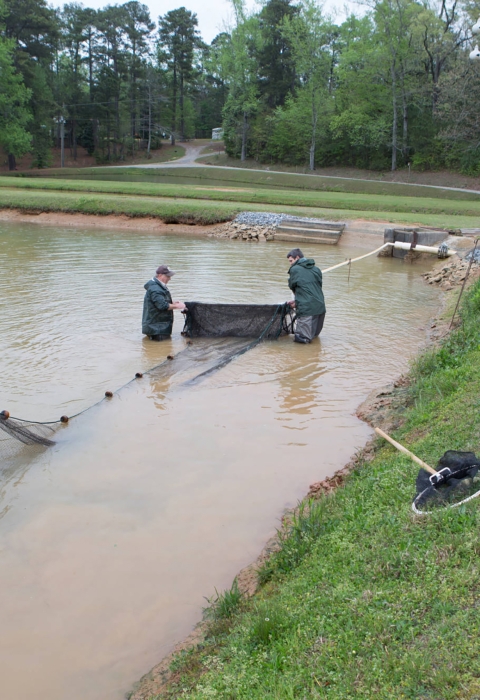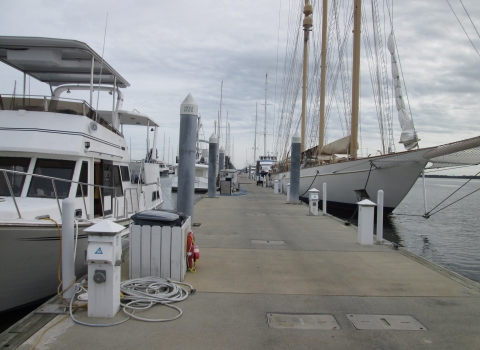The U.S. Fish and Wildlife Service today announced a new strategic plan for its Fish and Aquatic Conservation (FAC) Program that will address some of the nation’s greatest aquatic conservation challenges. The plan provides an overarching strategic vision that will guide the program’s annual operations for fiscal years 2016-2020.
Issues addressed in the document include habitat loss, fragmentation and degradation; overharvest; competition for water; introduction and establishment of invasive species invasive species
An invasive species is any plant or animal that has spread or been introduced into a new area where they are, or could, cause harm to the environment, economy, or human, animal, or plant health. Their unwelcome presence can destroy ecosystems and cost millions of dollars.
Learn more about invasive species ; and climate change climate change
Climate change includes both global warming driven by human-induced emissions of greenhouse gases and the resulting large-scale shifts in weather patterns. Though there have been previous periods of climatic change, since the mid-20th century humans have had an unprecedented impact on Earth's climate system and caused change on a global scale.
Learn more about climate change . Collectively, these ecological threats continue to pose significant risks to our nation’s aquatic resources.
"The U.S. Fish and Wildlife Service has a long and proud history of conserving and protecting our nation’s fish and aquatic resources,” said U.S. Fish and Wildlife Service Director Dan Ashe. “The framework provided by the strategic plan will help us work with states, tribes, other federal agencies and our partners to protect aquatic species and their habitats for generations to come.”
The plan identifies seven interdependent goals, each representing a fundamental theme that is critical to accomplishing the mission of the FAC Program. The goals include:
• Conserving aquatic species.
• Conserving, restoring and enhancing aquatic habitats.
• Managing aquatic invasive species.
• Fulfilling tribal trust and subsistence responsibilities.
• Enhancing recreational fishing and other public uses of aquatic resources.
• Increase staffing levels, technical capabilities and natural and physical assets to fully meet the Service’s mission.
• Educating and engaging partners and the public to advance the Service’s conservation mission.
“The Service’s Fish and Aquatic Conservation Program is uniquely qualified to address the significant and constantly evolving conservation challenges facing our nation’s fish and aquatic resources,” said David Hoskins, Assistant Director of the FAC Program. “The strategic plan will help us direct our resources toward our highest priorities. As a result, we will be better positioned to fulfill the plan’s goals and will ensure the Fish and Aquatic Conservation Program is fit for the future. We look forward to working with our many colleagues, partners and stakeholders to implement this new strategic plan for the benefit of all Americans.”
The plan builds on prior FAC strategic plans. In August 2014, a public comment period for the draft plan was announced on the FAC Program’s website. Comments were received from various individuals and organizations, including the Association of Fish and Wildlife Agencies, eight U.S. states, seven federally recognized Tribal entities, Service staff, the American Fisheries Society, Trout Unlimited, the Sport Fishing and Boating Partnership Council, National Fisheries Friends Partnership, National Fish Habitat Partnership, the Booth Society, and the U.S. Bureau of Reclamation.
The Service’s FAC Program operates across the nation to recover and restore endangered, threatened and imperiled species, fulfill tribal trust and mitigation responsibilities, and conserve a wide range of fisheries and other aquatic resources. The program also works to restore habitat across the landscape, prevent and control invasive species, assist Native American tribes and other partners in managing their fish and wildlife resources, advance fisheries and aquatic sciences and technologies, foster outdoor recreational opportunities, educate the public on the economic and ecological benefits of aquatic species and their habitats, and address new and emerging challenges, such as climate change.
This complex conservation portfolio reflects the challenge of managing aquatic species at a national scale in the 21st century. The broad responsibilities of the FAC Program underscore the need for a focused vision and strategic plan to make smart, well-informed decisions that make the best use of limited resources for achieving the program’s mission and long-term conservation goals.
For information about the plan visit http://www.fws.gov/fisheries/pdf_files/FAC_StrategyPlan_2016-2020.pdf. For more information about the Service’s Fish and Aquatic Conservation Program visit http://www.fws.gov/fisheries/.


